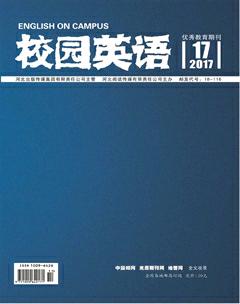Developing Learner Autonomy and Second Language Context
劉琳
I. Introduction
The limitation of time, sources, method facilitates both learner and teacher to come up with a way that learner can continue acquiring language after class. In other word, students are required to learn without guiding from either teacher or instructions in class. Many scholars, who devote themselves to second language teaching, keep working on exploring feasible ways to help learners with achieving lifelong learning. They discussed how to improve learners autonomy and implications that in class teaching contributes to learner autonomy. It provides many acceptable methods that could develop abilities of learning independency. The purpose of this essay is to discuss the path of reaching learner autonomy and the role of L2 context in autonomous learning with a learners perspective.
II. Path to learning autonomy
It is important to realize the function of subjective initiative in language learning. As John mentioned (2007:30), learners need in continuous learning is skills which can be convertible into self-instructed. The role of individual effort in lifelong learning is of the most importance. When the class is over, a student-centre situation comes into being, that is to say learners should take charge of their own learning (Holec 1981). Learning autonomy is also described as independent learning, flexible learning or student-centred learning. It is a ability for learner to take responsibility for their own study, including objectives, progress, content, method and techniques of learning (Macaro1997:167). Apparently, learners are expected to arrange their study activities with knowing what they want from it. It is true that teachers will teach you a great deal of knowledge in the class. The teaching activities are initiative and prepared thoroughly. However, it does not mean that teachers impart everything of a certain knowledge point and students can understand everything that teacher said. Such as in language class, teachers will tell you the main idea of one passage, and analyse the structures of the passage, instead of telling you how to know the main idea and structures from other passages. Because of lacking contact with different sorts of passages, even though students learn the method, they cannot change it into their own method. This purpose is not easy to reach by depending on the teaching time, but depending on your own endeavour after teaching. Given the individuals role, arousing the awareness of cultivating self-learning ability should be put in the first place.
Achieving the goal of independence, student should take advantages of training in the class. The role of teacher and student can be shifted for the sake of encouraging student to be confident and initiative in learning. In traditional class, teachers dont leave enough time and space for learners to develop their autonomy and put what they have learnt into practice. Lessons concentrate on teaching rather than acquiring possession of knowledge (Renandya&Jacobs1998:34). With the requirement of realizing the goal of being self-governed, teacher cannot be dominator any more and student needs to be flexible enough to free from instruction. What teacher ought to do is providing a proper direction to learner. As Field states (Field2007:34), achieving autonomy by teachers assist is a process that allowing student get the most from skills that they can acquire in the class. Moreover, utilizing these skills dominate learning outside school.
III. The role of L2 environment in learner autonomy
Field maintains (Field2007:32), learning language in a L2 environment requires more information in target language which is helpful than learning in a teacher-centred class. Obviously, L2 environment is ideally for language acquisition. Before formal teaching, people will familiar with the target language in such a context, absorbing words even sentences through everyday communication. Then, in-class teaching abundant offers an opportunity to practice and to be acquainted with the abundant information learned from L2 context. When goes back to real life communication, people can examine whether things can be appropriate used in this way. Sometimes, there are some grammatical correct sentences but cannot be understood by native speakers, because they are not expressions which they will use in real world. Communication largely consists of the use of language in conventional way (Richard1985:86). For instance, we can say ‘My body is good which means I am healthy. The first sentence is grammatically right, but native speakers would not comprehend what you want to say. The process of perception in real world automatically takes place with learners unconsciously actions.
How can the L2 environment impact on learning?
In a L2 situation, people are willing to contact with each other, to know the culture, to gain information from a new environment. This demand of keeping in touch with society is part of their daily life. Thus, in the method of developing learner autonomy, we tend to keep a watchful eye on creating atmosphere similar to real world and conforming training with acquisition process. According to Bocanegra and Haidl (1999), difficulties that we need to overcome on the way to improve autonomy is lacking of contacting with second language out of class. Studying the process of language processing is of vital importance to build approaches of acquiring language. Imitating or establishing language-learning course is serviceable for learning autonomous.
IV. Conclusion
As stated previously, in Johns article, I would agree that it is absolutely necessary to develop learner autonomy that makes people be able to take full use of skills getting in the class to take charge of ones own language study. Taking the benefits of L2 context into account, either teacher or learners are supposed to access ways that set up based on real world. It makes language learning more natural and high proficiency.
References:
[1]Renandya,W.and Jacobs,G.(1998)Learners and Language Learning.Republic of Singapore:SEAMEO Regional Language Centre.
[2]Richards,J.(1985)The Context of Language Teaching.Cambridge: Cambridge University Press.
[3]Macaro,Ernesto(1997)Target Language Collaborative Learning and Autonomy.UK:Multilingual Matters.
[4]Bocanegra,Ana and Haidl,Anton(1999)‘Language Learner Autonomy in Practice:Possibility in a Foreign Language Situation Revista Alicantina De Estudios Ingleses,12,pp:7-17.
[5]Field,John(2007)‘Looking outwards,not inwards ELT Journal,61(1),pp:30-38.

